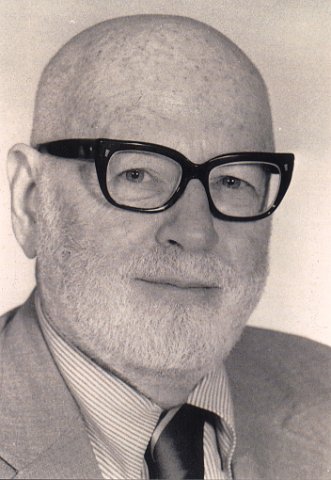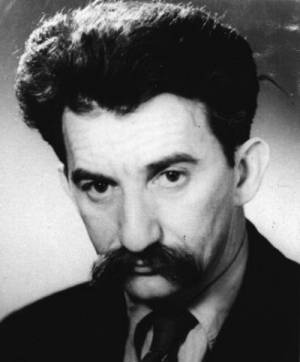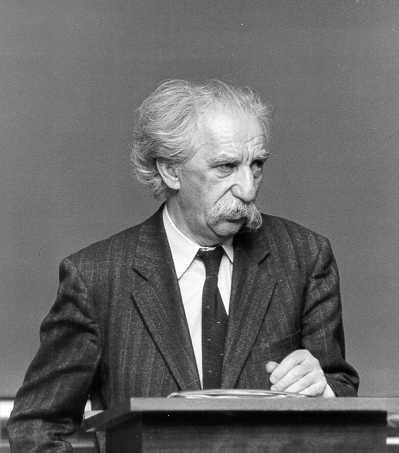<Back to Index>
- Semiotician and Linguist Thomas Albert Sebeok (Sebők), 1920
- Literary Scholar and Semiotician Yuri Mikhailovich Lotman, 1922
PAGE SPONSOR

Thomas Albert Sebeok (born Sebők; November 9, 1920, Budapest - December 21, 2001, Bloomington) was a polymath American semiotician and linguist.
Sebeok, a professor emeritus at Indiana University, expanded the purview of semiotics to include non - human signaling and communication systems, coining the term "zoosemiotics" and raising some of the issues addressed by the philosophy of mind. He was also among the founders of biosemiotics. As a linguist, he published several articles and books analyzing aspects of the Mari language (referring to it by the name "Cheremis"). His trans - disciplinary work and professional collaborations spanned the fields of anthropology, biology, folklore studies, linguistics, psychology and semiotics. He was especially renowned for his ability to bring together specialists from neighboring fields in order to generate path breaking perspectives on, for example, the study of myth, psycholinguistics, stylistics, animal communication and biosemiotics.
Based on his field of competence, Sebeok rejected the experiments on the putative linguistic abilities of apes, such as those described by David Premack, assuming the existence of a deeper, more universal and more meaningful underlying substrate: the "semiotic function".
In 1944, he became a naturalized citizen of the United States. In 1941, Sebeok earned a bachelor's degree at The University of Chicago. He earned a master's degree at The University of Chicago in 1943 and, in 1945, a doctorate at Princeton University. In 1943, at the age of 24, he arrived at Indiana University in Bloomington, to assist the Amerindianist Carl Voegelin in managing the country's largest Army Specialized Training Program in foreign languages. He then created the university's department of Uralic and Altaic Studies, covering the languages of Eastern Europe, Russia and Asia. He was also the chair of the university's Research Center for Language and Semiotic Studies, retiring in 1991.
Sebeok was the editor - in - chief of the journal "Semiotica", the leading periodical in the field, from its establishing in 1969, until 2001. He was also the editor of several book series and path breaking encyclopedias, including "Approaches to Semiotics" (over 100 volumes), "Current Trends in Linguistics" and the "Encyclopedic Dictionary of Semiotics".
In the early 1980s, Sebeok composed a report for the US Office of Nuclear Waste Management titled Communication Measures To Bridge Ten Millennia, discussing solutions to the problem of nuclear semiotics, a system of signs aimed at warning future civilizations from entering geographic areas contaminated by nuclear waste. The report proposed a "folkloric relay system"and the establishment of an "atomic priesthood" of physicists, anthropologists, semioticians to preserve the true nature of hazardous site.
In addition to his steady intellectual contributions to a number of fields over more than sixty years, Sebeok was a quintessential entrepreneurial scholar, organizing hundreds of international conferences and institutes, playing a key role in organizations such as the Linguistic Society of America, International Association for Semiotic Studies and the Semiotic Society of America, and in supporting the creation of linguistic and semiotics teaching programs and scholarly associations throughout the world.
Sebeok's personal library on semiotics, comprising more than 4,000 volumes of books and 700 journals, is preserved at the Department of Semiotics at the University of Tartu in Estonia.
Sebeok was survived by his wife (and frequent co-author), Dr. Jean Umiker - Sebeok, and three daughters: Veronica C. Wald, Jessica A. Sebeok and Erica L. Sebeok. Sebeok was also survived by one grandson, Oliver Thomas Sebeok Shuchart, and one granddaughter, Miranda Lynn Sebeok Shuchart.


Yuri Mikhailovich Lotman (Russian: Ю́рий Миха́йлович Ло́тман, Estonian: Juri Lotman) (28 February 1922, Petrograd - 28 October 1993, Tartu) was a prominent Soviet literary scholar, semiotician, and cultural historian. Member of the Estonian Academy of Sciences. He was the founder of the Moscow - Tartu school of cultural semiotics and is considered to be the first Soviet structuralist because of his early essay On the Delimitation of Linguistic and Philological Concepts of Structure (1963) and works on structural poetics. The number of his printed works exceeds 800 titles; and his archive which is now kept at the University of Tallinn and which includes his correspondence with a number of Russian intellectuals, is immense.
Yuri Lotman was born in the Jewish intellectual family of lawyer Mikhail Lotman and Sorbonne educated dentist Aleksandra Lotman in Petrograd, Russia. His older sister Inna Obraztsova graduated Leningrad Conservatory and became a composer and lecturer of musical theory, his younger sister Victoria Lotman was a prominent cardiologist, and his third sister Lidia Lotman was a scholar of Russian literature of the second half of 19th century on staff at the Institute for Russian Literature of the Russian Academy of Science (Pushkin House) (she lived in Saint Petersburg).
Lotman graduated from secondary school in 1939 with excellent marks and was admitted to Leningrad State University without having to pass any exams. There he studied philology, which was a choice he made due to Lidia Lotman's university friends (actually he attended university lectures in philology whilst he was still at secondary school). His professors at university were the renowned lecturers and academicians - Gukovsky, Azadovsky, Tomashevsky and Propp. He was drafted in 1940 and during World War II served as a radio operator in the artillery. Demobilized from the army in 1946, he returned to his studies in the university and received his diploma with distinction in 1950. His first published research papers focused on Russian literary and social thought of the 18th and 19th century.
Unable to find an academic position in Leningrad due to anti - Semitism (he was unable to apply for a PhD program), Lotman went to Estonia in 1950 and from 1954 began his work as a lecturer at the Department of Russian language and literature of Tartu University and later became head of the department. In Tartu he set up his own school known as the Tartu - Moscow Semiotic School. Among the other members of this school were such names as Boris Uspensky, Vyacheslav Vsevolodovich Ivanov, Vladimir Toporov, Mikhail Gasparov, Alexander Piatigorsky, Isaak I. Revzin, Georgii Lesskis, Igor Grigorievitch Savostin and others. As a result of their collective work, they established a theoretical framework around the semiotics of culture.
This school is widely known for its journal Sign Systems Studies, published by Tartu University Press (formerly in Russian as "Труды по знаковым системам") and currently the oldest semiotics journal in the world (established in 1964). Lotman studied the theory of culture, Russian literature, history, semiotics and semiology (general theories of signs and sign systems), semiotics of cinema, arts, literature, robotics, etc. In these fields, Lotman has been one of the most widely cited authors. His major study in Russian literature was dedicated to Pushkin; among his most influential works in semiotics and structuralism are «Semiotics of Cinema», «Analysis of the Poetic Text» and «The Structure of the Artistic Text». In 1984, Lotman coined the term semiosphere.
Yuri Lotman's wife Zara Mints was also a well known scholar of Russian literature and Tartu professor. They had three sons:
- Mihhail Lotman (born 1952), a professor of semiotics and literary theory at Tallinn University, active in politics, served as a member of the Estonian Parliament (conservative Res Publica party);
- Grigori Lotman (born 1953), an artist;
- Aleksei Lotman (born 1960), a biologist, since 2006 also a politician and a member of parliament for the Estonian Green party (2007 - 2011).